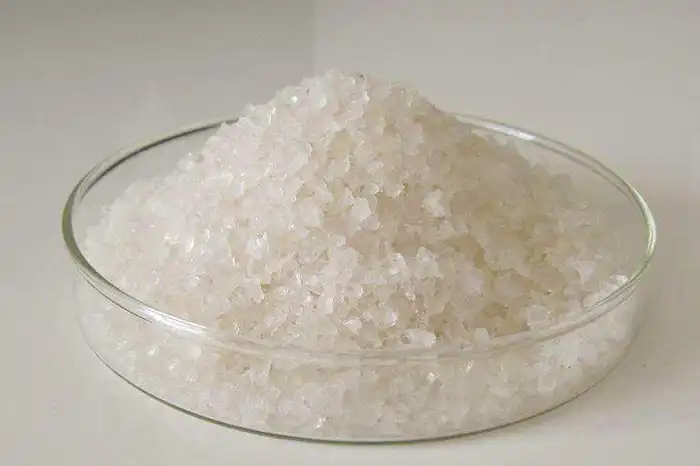According to Messi Biology, magnesium oxide (MgO) is mainly used as a functional additive in water retention agents, especially in combination with superabsorbent resins (such as polyacrylates), to improve certain properties. It doesn’t act as the primary water-absorbing material on its own, but rather plays an auxiliary and enhancing role. The most crucial and valuable application of magnesium oxide in water retention agents (mainly superabsorbent resin types) is as a pH regulator and stability enhancer, effectively addressing the performance degradation of polyacrylate water retention agents in acidic environments and greatly expanding their applicable range. Secondary roles include providing slow-release magnesium nutrition, potentially improving gel strength, and offering some auxiliary hygroscopic properties. It’s typically used as a key functional component in composite water retention agent systems, rather than the primary water-absorbing matrix.

Here’s a breakdown of the applications:
- pH Regulator and Stability Enhancer:
- Problem: Many high-performance water retention agents, such as sodium polyacrylate, experience a significant decrease in water absorption capacity under acidic conditions. Soil environments, fertilizers, or irrigation water can sometimes be acidic.
- Action: Magnesium oxide is an alkaline oxide (MgO + H₂O → Mg(OH)₂). When added to water retention agents (usually during the synthesis process or as a post-added filler/coating), it can slowly release OH⁻ ions into the water environment, increasing the pH of the local microenvironment and maintaining it in a neutral or slightly alkaline range.
- Effect: This helps maintain the high water absorption rate and stability of polyacrylate water retention agents over a wider pH range (especially under acidic conditions), preventing water loss or degradation due to acidification. This is very important in practical applications (such as in acidic soils).
- Ion Strength Regulator:
- Problem: The water absorption capacity of superabsorbent resins is very sensitive to the ion strength in the solution. The presence of salts (such as Na⁺, K⁺, Ca²⁺, Mg²⁺) can significantly reduce their water absorption rate (salt sensitivity effect).
- Action: Although magnesium oxide itself introduces Mg²⁺ ions, its main role is to indirectly influence the ion strength by adjusting the pH. More importantly, during the synthesis or modification process, the presence of magnesium oxide may help optimize the charge distribution or cross-linking density of the resin network, thereby improving the water retention agent’s tolerance to salt to some extent (although the effect is not as significant as specialized salt-resistant modification methods). Its slow-release alkaline environment may also help stabilize the carboxylate ions of the resin.
- Slow-Release Magnesium Source:
- Action: Magnesium oxide slowly dissolves under the action of water and weak acids (such as carbonic acid in the soil, secretions from plant roots), releasing the nutrient element magnesium (Mg²⁺) needed by plants.
- Effect: This allows composite water retention agents containing magnesium oxide to provide a water retention function while also acting as a slow-release magnesium fertilizer, supplementing plants with magnesium, promoting chlorophyll synthesis, and promoting plant growth. This achieves a combination of “water retention” and “nutrition” functions.
- Improve Gel Strength/Structure:
- Action: Adding magnesium oxide particles during the synthesis or compounding of water retention agents allows these particles to exist as physical cross-linking points or fillers in the polymer network.
- Effect: This may enhance the mechanical strength of the hydrogel after water absorption to a certain extent, making it less prone to breakage or collapse, especially under pressure (such as soil covering), which helps maintain its water retention space. However, this effect usually requires optimizing the amount of addition and dispersion.
- Auxiliary Hygroscopic Effect:
- Action: Magnesium oxide itself has a certain hygroscopicity.
- Effect: In low-humidity environments or as a minor component of composite materials, magnesium oxide can contribute some hygroscopic capacity. However, in composite water retention agents dominated by superabsorbent resins, this contribution is relatively small.
Application Forms:
- In-situ synthesis addition: Magnesium oxide powder is added to the reaction system as an additive during the synthesis of polyacrylate water retention agents.
- Surface modification/coating: Magnesium oxide powder is loaded onto the surface of synthesized water retention agent particles through physical mixing, spraying, or chemical reactions.
- Composite filler: Used as a component of composite water retention agents together with clay minerals (such as bentonite, kaolin) or other functional fillers.
Messi Biology Co., Ltd. states that the research and application of using magnesium oxide to improve water retention agents (especially acid resistance) have been reported in literature and patents, especially in the field of agricultural water retention agents. Some commercialized or experimental water retention agent products may have adopted this technology or similar principles (using other alkaline oxides or hydroxides). This is an effective modification strategy aimed at improving the environmental adaptability and functionality of water retention agents.
